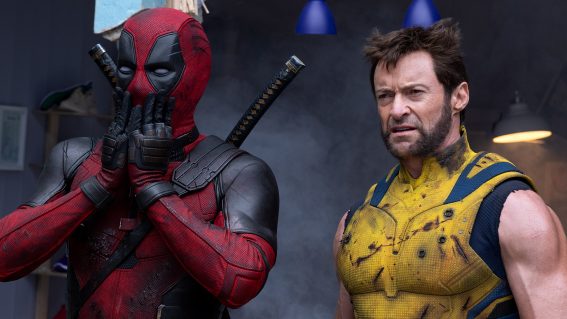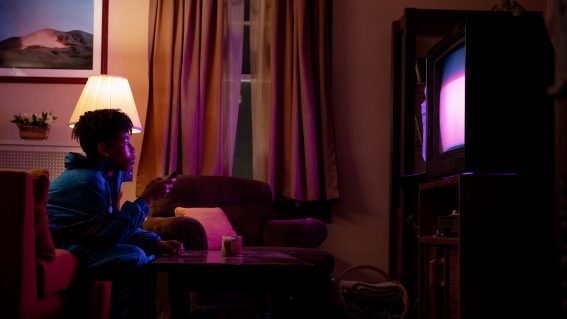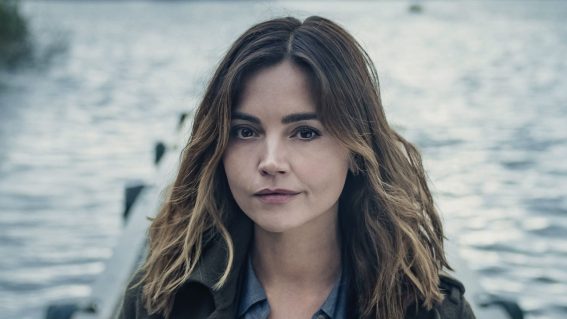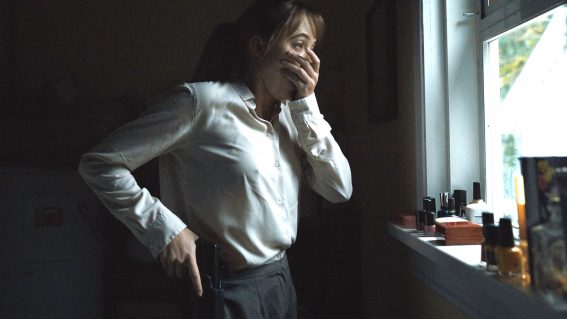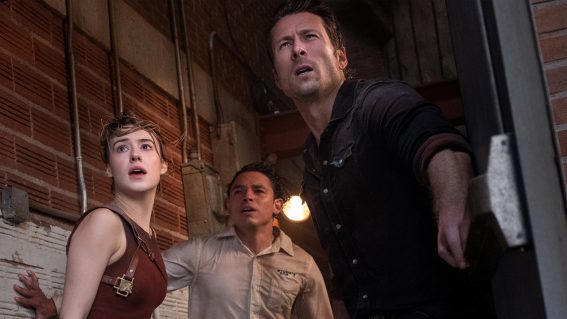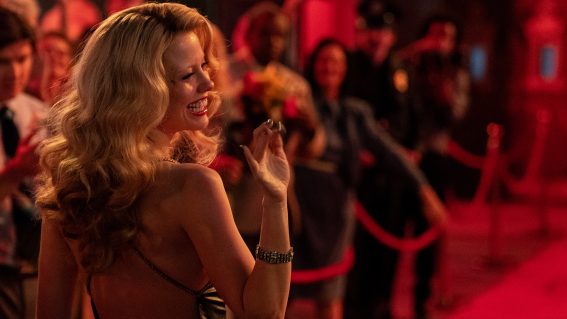Get ready for Civil War: a gut-busting, one-of-a-kind disaster movie

In Civil War‘s not-so-alternate future, photojournalists capture the white-hot flame of a burning US empire. Luke Buckmaster says the new Alex Garland film feels like an unsettling prophecy.
It’d be rather hackneyed of me to say I was on the edge of my seat during Civil War, Alex Garland’s dystopian vision of a violently besieged America that, terrifyingly, feels more like a premonition than a fever dream. But there I was: body hunched forward, limbs tensed, gooseflesh raised. I couldn’t shake my discomfort throughout this one-of-a-kind disaster movie about a group of journalists, including Kirsten Dunst’s Lee and Wagner Moura’s Joel, who travel to war-ravaged Washington to try to interview the President, despite warnings that doing so will be a suicide mission.
The nation has been divided into warring camps, with Texas and California forming a “western front,” blood and carnage bathing the streets. The film begins with the President (Nick Offerman) practicing a speech, interspersed with grainy visions of war: rioters, soldiers, corpses, bedlam. Going forward, however, the President is barely in it: fleshing out his character would likely involve describing his political circumstances.
Garland, again directing his own script—following Ex Machina, Annihilation and Men—opts for ambiguity, letting the audience imagine details rather than get sidetracked with discussions around whys and wherefores. This vagueness is a limiting factor; sometimes it doesn’t feel like there’s much meat on the bone. The leanness of the film also means there’s a lot of wide open space, a lot of room for things to go wrong.
Narrative focus rests on the aforementioned journalists, who work for Reuters, and two others who join them, contrasting age and youth, wariness and naivety. There’s Sammy (Stephen McKinley Henderson), an old reporter who writes for “what’s left of the New York Times,” and Jessie (Cailee Spaeny), an aspiring young photographer who idolises Lee and represents innocence (and innocence lost). The group are shepherded through the most frontline of frontline scenarios, by militia who seem to think their presence is crucial. Which beggars belief: does anyone in this woebegone world even read the news anymore? Does anybody care?
It’s a justifiable plausibility-pusher, however, because it takes us right to the edge of the conflict, without casting the characters as fighters—which would’ve resulted in a very differently oriented production. Lee and co. aren’t catalysts for change. They’re observers and audience proxies: their gaze is fused with ours, as much during battle scenes as the road movie moments snapshotting the hellhole America has become. All the performers impress, particularly Dunst: there’s a terrible heaviness to her presence, and a glaze in her eyes that’s difficult to shake.
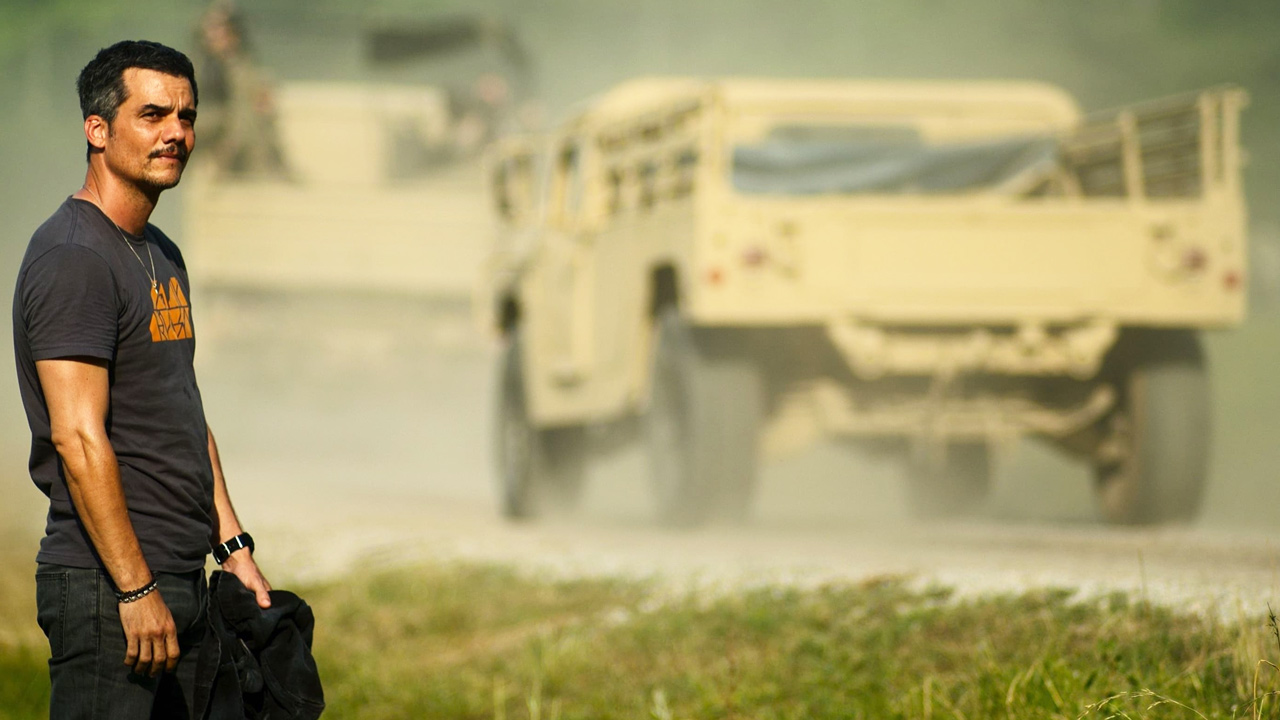
Many of the visuals, like in time-ravaged sci-fi productions such as The Last of Us, are configured to show what is while inferring what once was. Buildings weren’t always burning; stadiums used to house sporting events, not camping sites. Whereas The Last of Us takes place in a decayed world where nature is reclaiming the space, evoking a sense of renewal, Civil War belongs to the white hot part of the flame: the fire still raging, the unthinkable transpiring.
It’s not the film’s individual scenes that make it scary, poised though many are on a knife-edge. It’s the sheer plausibility of the premise; the sense something like this really could happen. Just a decade ago, it would’ve felt far out, like The Purge, Soylent Green or some other horror safely confined to an allegorical future or alternate universe. Things are different now, with many compounding factors in the horrorverse of modern existence including the spectre of Donald Trump, munching like a Langolier on the edges of reality, feasting on fear and division, fanning the flames of a war in which nobody seems to know what they’re fighting for, or even if there’s a war at all.
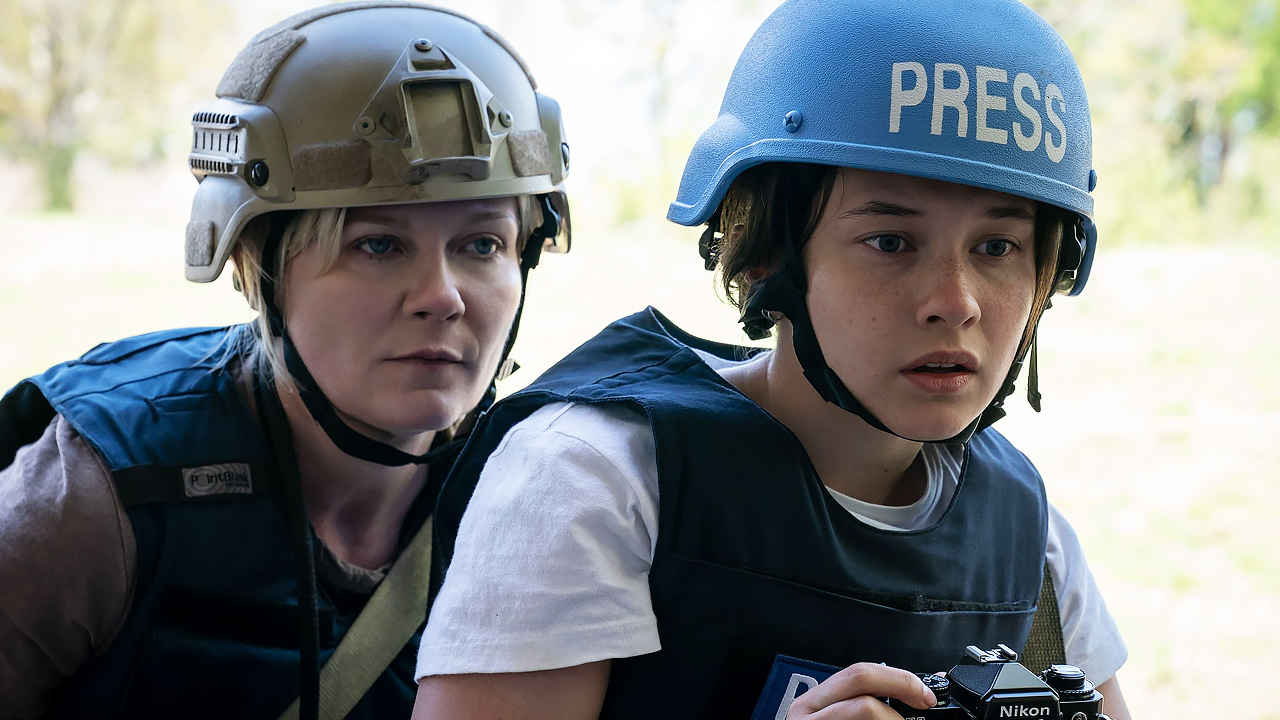
The rising volume of the times is regularly referenced in our art (a line from Todd Philips’ great film Joker comes to mind: “is it just me, or is everything getting crazy out there?”). And the itchy feeling that humanity is heading for cataclysmic or even apocalyptic events has been recently exploited in films such as Knock at the Cabin (which I wrote about here) and Leave the World Behind. It has been said many times that the phrase “may you live in interesting times” is a Chinese curse, cautioning us about a world of turmoil and anxiety; that is, our world today. How fitting that this phrase is apocryphal, which is to say, total BS—there was never a Chinese curse. Even the warning about a collapse of reality has no reality in it.
The tag-line of Civil War on the other hand feels awfully real: “all empires fall.” It indeed feels like we’re watching the American empire collapse before our eyes, in shocking slo-mo, death by a hundred thousand blows, interspersed with moments of revved-up insanity—such as the January 6 United States Capitol attack, which is one of the reasons Garland’s film has such a sting. The gap between the imaginative universe and our own feels dangerously small. Just thinking about this film makes me tense.







